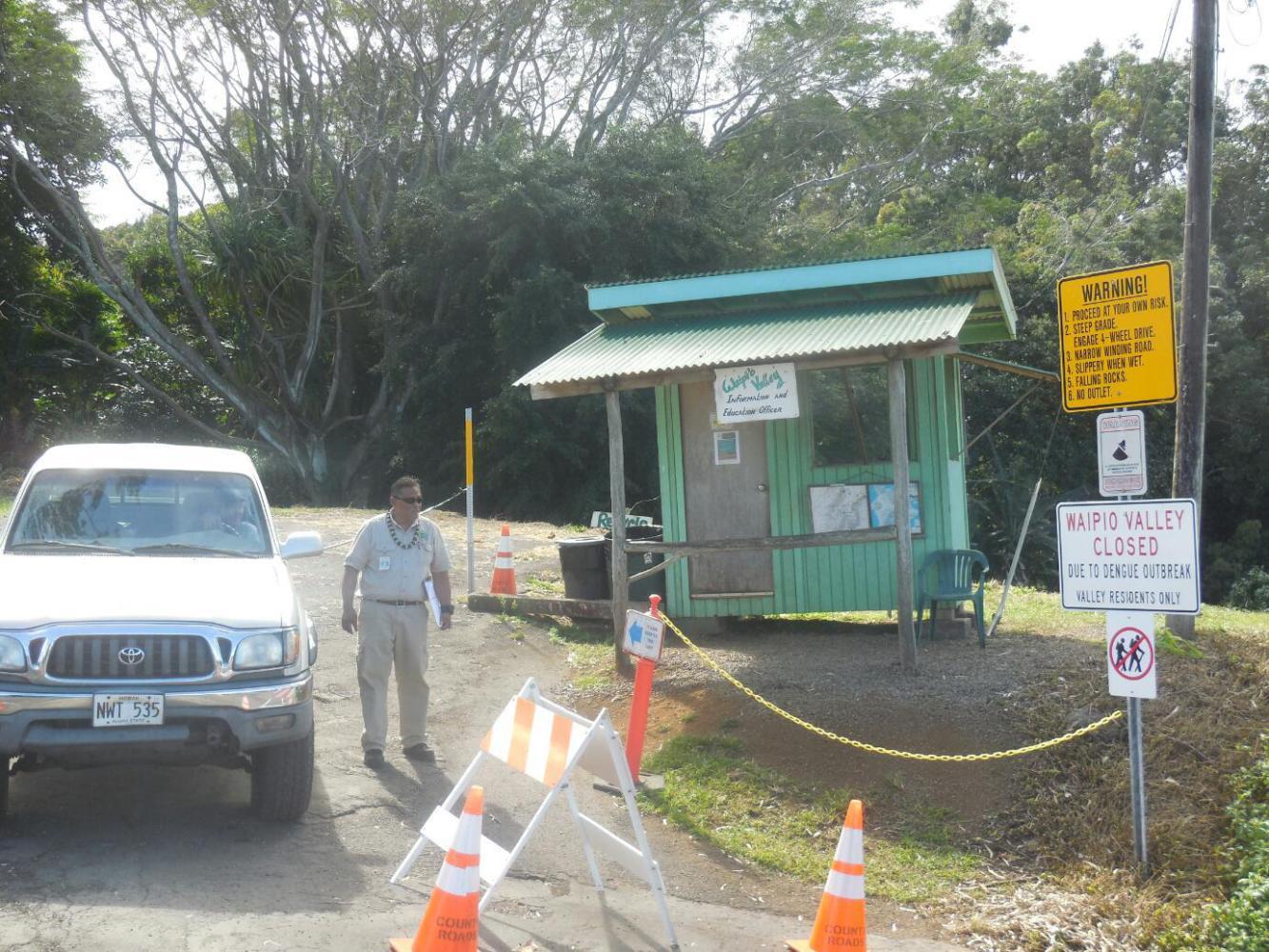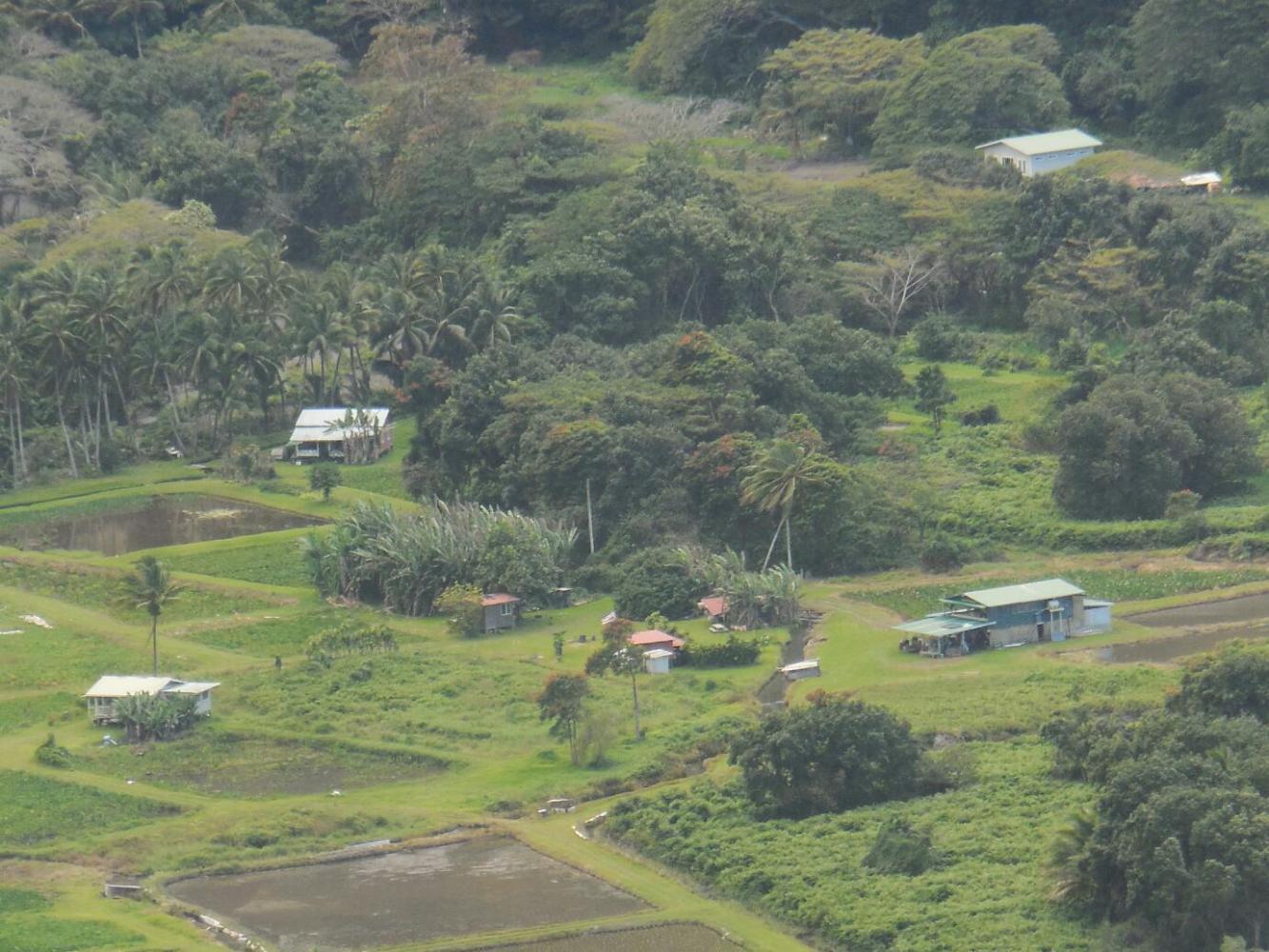January 31, 2016
Day 21: Honokaa to Waipio (and back)
The more days we stay on Hawaii, on this trip and previous ones, the more the various aspects of the culture and economy come into focus. It's a funny feeling to be coming to know a place better, because most of our previous travels have been a focused effort to cover territory - so little have we previously seen of anything that we are always eager to move on and see more.
But now in Hawaii, we find that puzzles like why are there so many old houses with rusty tin roofs in this land of fun on the beach and pricey luauas are easily answered. Some other ones still have us scratching our heads a bit - like why are the prices for food and accommodation so dramatically high? Why does our hotel room not have so much as a ceiling fan, for $100?
The rusty houses and such? The Hawaiian economy has had three major eras since the 18th century. In the first phase there was the pre-contact native Hawaiian culture and economy. But sometime after the visit of Captain Vancouver there was a major agricultural phase. This was based on sugar, coffee, pineapples, and suchlike products, as well as cattle. The agricultural economy brought immigration of Japanese, Portuguese, Filipino, and Mexican workers, and these gave the place a unique cultural identity. Towns sprung up, with stores often built by the Japanese, and dependent on the populations working in the fields, and in the sugar and other mills.
During the 20th century, the agricultural industries faded, the towns died or shrunk, and the roofs rusted. But midway through the century a new industry - tourism - popped up. Waikiki on Oahu is somehow the centre of that, but on the Big Island of Hawaii any and all glitzy hotels were built mainly near Kona. The remainder of the island receives some trickle down effects of the main tourism industry, but not enough for the remnants of the former eras to be erased and built over.
In Honokaa, in fact, (you were wondering when I would get to Honokaa!) it is the remnants that actually form the basis of any tourist interest. On this (Hamakua) coast, sugar was king, and all the (ten) towns that were along it were sugar towns. This is not that long ago - the last sugar harvest was in 1994.
So when our hotel is referred to in descriptions of the town as "plantation style", that is for good reason. Plus its architecture reflects the best pioneering efforts of the Japanese family that built it, and the rooms reflect its use to house plantation and mill workers.
Sitting this morning at the communal breakfast table with Anelle and Jory, some of this history came up. In fact, it was thrust into all our faces by the headline in today's paper: "Life Without Sugar". The story concerned the closing of the last sugar mill, on Maui. The reason for these closures? (Laurie, you will love this) High fructose corn syrup.
A by-product of the end of sugar on this coast was that the native forest had been cleared for the sugar cane. Now without cane, someone had the idea of planting fast growing Eucalyptus, to be sold for wood chips. A Californian variety was found that could mature in 5 years. That was in the 1990's. But somehow the market did not materialize, and the trees were never cut. Now we have what seems to us quite stately forests of totally mature, really tall, Eucalyptus. It seems like they would be great for lumber, or just to look at. But we know nothing more of the economics or environmental aspects of these trees. With a bit of time, we might be able to research it. But if anyone is familiar with this topic, let us know!

| Heart | 0 | Comment | 0 | Link |

| Heart | 0 | Comment | 0 | Link |
Because we had zoomed up here from Hilo without a stopover, we were here on a Sunday - farmers' market day. Farmers' market is always a priority with us, so we pedalled the 2 km over to the site first thing. The market had only about 20 vendors, but still there was a reasonable quantity of fruits and veggies, honey, baking, and so on. One of the stalls had highly recommended Thai food, which seems to be much in favour in Hawaii, quite without there being any significant Thai population.
We just looked around at first, and then headed off on the bikes to scout out the ways out of town (in the direction of Waimea). We were looking for the shortcut that also involved the least climbing. This research took us out along the highway, past a place called Tex Drive In. They claimed to have special malasadas, but since we did not see them on display, we just doddered on. One thing up on the highway that was easy to spot was another of those old trailer based operations, cooking up dozens of BBQ chickens. Here, BBQ is called Huli Huli. As with other BBQ, there is basting and spice rubs involved, but the hardwood smoke and old trailer are the elements that are most noticeable.
Dodie does not really like (might almost hate) BBQ, so she threw out some good arguments about the cost, the fact that it was not lunch time, that we had no way to store or really transport a chicken, that the chance to split some Thai food was waiting for us down at the farmers' market, etc. So needless to say we bought a chicken plate. It had 1/2 a huli huli chicken and the mandatory rice, and macaroni salad.
Now I love BBQ, and this was good, but as we also learned in Texas, food smoked on mesquite or similar hardwood usually ends up tasting like it was coated in cigarette ashes. Much better is to cook with something like our lovely northern alder. We did go down and pick up some Thai food too. It too was ok, but it seems neither of us is raving about our lunch acquisitions today.
Just these two lunches cost us $20, which is just too much. It is hard to stay fed here without going broke. This was further illustrated as we bought a handful of green beans at the market. There were lots on hand, so we were surpised when our little handful was charged out at $2.50. And then two cookies? $4.

| Heart | 0 | Comment | 0 | Link |
We had shot not only our budget but also our stock of fun things to do today, and it was still before noon. So we decided to borrow fun from tomorrow and head out to Waipio Valley today.
The Waipio Valley is a narrow bit of land jammed between high cliffs, about 15 km west of here. Wailoa Stream and other streams run through the valley, which has waterfalls at its western end. At the eastern end is a beautiful, unused black sand beach. The only way down into the valley is by a one mile long but 25 percent grade dirt road. In the valley are just a few residents, engaged in growing taro.
Waipio is high advertised in the 101 Things to Do in Hawaii type publications. Operators are ready to take you down the road by ATV, by horse and cart, by horse, etc. However there is only one road down there and all else is private land, so I am not sure what happens next. It's a moot point now, though, because the valley has been closed by the threat of Dengue Fever. So all we and everyone else could do was to ride to the top of the dirt road and look down from a viewpoint.

| Heart | 0 | Comment | 0 | Link |

| Heart | 0 | Comment | 0 | Link |

| Heart | 0 | Comment | 0 | Link |
The ride from Honokaa over to Waipio, however, was quite fun, with a reasonable shoulder and light traffic. Only thing, there were quite a few hills, so in the end it was a bit tiring. Along the Waipio road there were some very fine looking houses, with attractive tropical landscaping. It puts a little dent in my tale of rusting sugar era accommodation, and the ghosts of the immigrant workers. Instead, in many spots it seemed like a standard suburb.
This blog entry is being written and posted a little bit early, because we are gearing up for a big night on the town. Soon we will stroll out clutching our $3 each and attend the Honokaa People's Theatre (built 1930). Tonight's feature: "Daddy's Home".
Today's ride: 37 km (23 miles)
Total: 736 km (457 miles)
| Rate this entry's writing | Heart | 0 |
| Comment on this entry | Comment | 0 |















